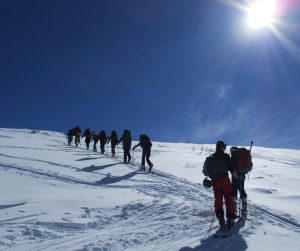The Teenage Brain
I am sitting with my son on a plane the day he turned thirteen, and almost precisely at the moment that would mark his birthday, the sweet little boy presented a previously unseen edge in his impatience with me and all of a sudden it appeared as though I could not do anything right. I am not exaggerating when I share this – he was at that moment a noticeably different person: one that had very little tolerance for my getting something wrong and becoming annoyed relatively quickly with something that I no longer could read because I was in my 50’s (and therefore I helpless with small print). The moment didn’t last long, and by all measures, he remains a very gentle and kind person, but the shift in his attitude towards me was noticeably there. I shouldn’t have been surprised, given what I know about the teenage brain. I also shouldn’t have been surprised when a few days later we would step off a train and walk 30 feet only for him to then realize that he had left his luggage back on the train…I think his brain registered that he had left his behind only after he observed me rolling my bag along to our destination, and finally made the connection that he should be rolling his bag along as well.
The adolescent years are one of the most dynamic and often messy times in our lives as it is during these years the adolescent brain and body are reorganizing. During this time, the brain is going through a process in which it strengthens its connections from back to front, leaving the prefrontal cortex (the area where reason is located and often known as the “CEO of the brain”) for last. The sequence makes evolutionary sense as it allows the prefrontal cortex to remain adaptable to its environment and allows for new ideas and learning that potentially will ensure that person’s survival out in the world.
As Frances Jensen, a professor in neurology and an expert on the teenage brain shares, “The teenage brain is not an adult brain with fewer miles on it.” It is a brain that is only 80% developed in adolescence, and the prefrontal cortex will continue to develop into the mid-20’s making this phase in the young adult’s life one of the most important periods of time as the future adult brain is essentially under construction. As a result, the teenage brain’s prefrontal cortex is slower in making connections than an adult’s. Research has shown that where an adult might use the prefrontal cortex for certain tasks, teenagers, when confronted with the same tasks, use other portions of the brain that are more readily available to them, such as the amygdala. The amygdala is what is known as the “reptilian” part of the brain, and this explains a lot when you consider that reptiles do not spend time nurturing others; they are territorial, and much of their responses to the world are impulsive and based on the primary emotions of fight and flight. Sound like a teenager you might know or have heard about or interacted with recently?
The fact that the teenage brain is a work in progress is what makes the high school years such a critical time in their lives, and it explains much of the change in behavior that we see when our children get to high school age. The right learning environment is critical at this time in an adolescent’s life. The capacity for academic achievement is not set in stone (Jensen notes that between the ages of 13-17 about a third significantly increase their I.Q) and this period presents students with considerable opportunities to develop what will essentially become the brain that they will have for the rest of their lives. The importance of this time is so incredibly vital that it requires a more in-depth explanation.
The adolescent brain is one that is very agile and can adapt and change, and it can strengthen already established connections. At this time in the student’s life, it is also going through a final phase of synaptic pruning to gain efficiencies and structure. Researchers and neurologists use different metaphors to describe what is happening, but I find the street metaphor to be easy to understand. Over the course of one’s life, the brain has figured out many different paths to get to a single location, but for the sake of efficiency, it is only going to keep the roads to that location that get used the most often. It will essentially cut out pathways that are seemingly superfluous. In short: you either “use it or lose it.”
What does this mean for an adolescent’s learning environment and what should you look for in a school? I have read advice that suggests that the teenager should spend time doing things that they are “great” at, because this is a time when you can build strong connections in these areas, and that adolescence is a great time “to invest in emerging talents” (Jensen). It is good advice, but given what I understand about the transformation of the brain at this point – the process of pruning away unused areas – it seems equally important to challenge the teenager with new experiences that produce strong neurological connections in areas that may be perceived weaknesses. I believe that a high school experience should encourage a wide range of access and participation in and outside the classroom to work both the strengths and the weaknesses of the student’s neurological pathways. Teenage brains can respond to their environment, and as such the more variety that they experience, the more they will develop and strengthen connections in a variety of areas. It is an excellent time for teenagers to learn compassion, responsibility, connection and community engagement because these are the connections that are the slower to develop and benefit from reinforcement.
We believe that teenagers need to be stretched beyond what they have known and experienced in the world. A teenager that is confining their experiences to only the things that they are good at, or specializing in a specific type of academic subject, or spending their time hanging out at the local 7-11, or playing games on the computer is not taking full advantage of the plasticity of their brain at this time. Students should be exposed to a wide variety of learning experiences that allow them to be creative, challenges them to be brave in the face of what is often temporary discomfort, and inspires their sense of curiosity through a balance of the arts, athletics, and academics.
A short list of essential truths to keep in mind:
• The brain cannot multi-task.
• Sleep is essential for teenagers as it is where a lot of wiring takes place and supports learning and memory consolidation (as does #3 on this list).
• Our brains evolved through walking miles every day and as such aerobic exercise often supports learning and memory.
• John Medina shares that “Parts of our adult brains stay as malleable as a baby’s, so we can create neurons and learn new things throughout our lives. In essence, our capacity to learn never really ceases, but it does become “harder” as we grow older and work with the neurological connections that we developed during this critical period.
• Studies show that there is a correlation between online time and a person’s perceived sense of happiness. Jensen suggests “limiting virtual socializing” to 1-2 hours per day.
• Drugs and alcohol do have an impact on the pathways the brain forms during this critical period.
• Studies show that teenagers tend to misinterpret multiple facial expressions, and they are quicker to read disappointment in someone’s face – even if they are wrong and have misread the person’s features – than an adult will.
• Peer pressure is registered as a large reward in the adolescent brain. Research points out that this is one of the darker sides to having such an open and dynamic mind at this time in our lives, and while you cannot keep students from feeling pressured by their peers, you can provide them with an environment in which that peer pressure presents itself in positive and supportive ways.
Given all of the information that I have shared above, I am all the more confident in the programming that CRMS provides and the values we uphold. As a head of school, longtime educator, and parent, I can appreciate the importance of a school culture that encourages and supports a wide variety of learning experiences for our young adults. CRMS includes art as a core requirement in the first two years and is designed for each student to access any level of our sports programs. Community engagement and empathy may not come easily for many teenagers, but they do it when they are surrounded by peers and mentors who are involved, connected and caring. This positive culture at CRMS is established when they first set foot on campus to embark on an outdoor orientation that will provide them with appropriate challenges and a sense of responsibility to themselves and each other in a beautiful mountain setting.
If you want to learn more about the brain, see works by John Medina (I would recommend, Brain Rules). If you are interested in specifically reading more about the teenage brain, I would suggest Frances Jensen’s The Teenage Brain which we will make our Family Weekend book club read for next fall (October 2018).
 MYCRMS
MYCRMS





 Virtual Tour
Virtual Tour

